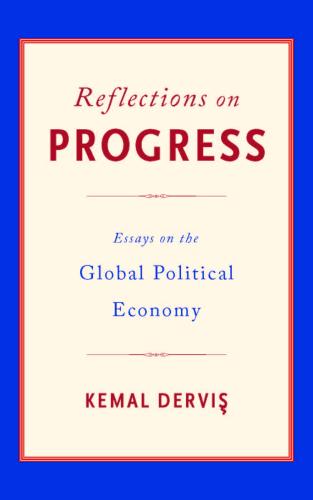This report is part of a series of essays by the Global Economy and Development program—a 10th anniversary edition. The series, available here, delves into the critical issues facing all those concerned about globalization. You can join the conversation on Twitter using #11GlobalDebates.
1.1 What’s the issue?
Since 1945, the United States has led international efforts to expand trade and integrate markets, helping underpin U.S. as well as global growth. Yet 2016 Republican presidential nominee Donald Trump is proposing policies that would turn the U.S. away from greater economic integration and likely provoke a trade war. Democratic nominee Hillary Clinton has backed away from supporting the Trans-Pacific Partnership (TPP) Agreement—a 12 nation trade deal signed by President Obama in February 2016.
12% is the share of the manufacturing sector in the U.S. economy.
That there is fertile political ground for anti-trade positions in a country that has gained so much from trade points to a failure of government and business leaders to build support for international trade, as well as to subpar responses to the needs of those who have lost out from trade. Failure to address these issues will undermine the capacity for the U.S. to continue to lead in support of international trade, to the detriment of the U.S. and the world.
1.2 What’s the debate?
The debate over international trade, including whether Congress should support TPP, is often based on concerns about the trade deficit, the impact of trade on jobs and manufacturing, and widening income inequality.
For proof that the U.S. gains from international trade, one need look no further than to the theory of comparative advantage, which holds that U.S. welfare is maximized by supplying those goods and services that it produces best and by using the income from selling such products overseas to import the goods and services that other countries produce more efficiently. Modern trade agreements also require adherence to global environmental and human rights standards.
It is also the case that wages of unskilled workers in developed economies are likely to be stagnant or lower as a result of trade with lower-income countries (Ebenstein et al 2014). In this respect, trade can be associated with widening income inequality. However, given that overall the U.S. gains from trade, the best response is to do more to tackle the adjustment costs of trade.
1.2.1 Does the trade deficit matter?
Except for a brief period in the early 1990s, the U.S. has been running a trade deficit since the 1970s. The trade deficit is commonly seen as evidence that the U.S. is made worse off by trade. The intuition here is that imports support jobs overseas at the expense of jobs in the U.S. Yet, over the past 30 years a widening U.S. trade deficit has been correlated with rising GDP and lower unemployment.
To understand why, it is necessary to look at the economic impact of capital inflows into the U.S., which is itself a function of the U.S. savings and investment gap. International capital flows into and out of the U.S. are significantly larger than trade in goods and services, and through their impact on macroeconomic variables, are the main drivers of the trade deficit. As Ben Bernanke said in 2005, “Specific trade-related factors cannot explain the magnitude of the U.S. current account imbalance…the U.S. trade balance is the tail of the dog; for the most part, it has been passively determined by foreign and domestic incomes, asset prices, interest rates, and exchange rates, which are themselves the products of more fundamental driving forces.”
Capital inflows reflect confidence in the U.S. economy as foreigners demand U.S. assets such as bonds, equities, and real estate. Yet capital inflows put upward pressure on the dollar and on U.S. asset prices, making imports cheaper and exports less competitive which widens the trade deficit.
1.2.2 Trade, manufacturing, and jobs
International trade has had a positive impact on overall U.S. jobs growth. However, it has led to job losses for some, particularly lower-wage manufacturing workers. U.S. manufacturing represents about 12 percent of U.S. GDP and approximately 8 percent of employment. Manufacturing employment has been declining since the 1950s, well before the World Trade Organization, the North American Free Trade Agreement, or China’s entry into the world economy. Moreover, employment in manufacturing has been declining at a similar rate in other OECD countries, including in Germany and Japan, which run trade surpluses.
The most important driver of job losses in manufacturing has been the sector’s long-term, above-average productivity gains. Such gains allowed companies to produce the same quantities of goods with less labor, reducing the relative price of manufactured products. This dynamic has been magnified by consumers’ spending a declining share of their income on goods since 1960 (Edwards and Lawrence, 2013).
However, China’s growing participation in international trade from 2000 did precipitate further significant declines in manufacturing employment.
Between 2000 and 2010, the U.S. lost close to 6 million jobs in the manufacturing sector. Manufacturing employment fell from around 17.3 million jobs in 2000 to 14.3 million in 2004—a loss of approximately 3 million jobs. Between 2004 and 2007, manufacturing jobs largely stabilized at around 14.2 million jobs. In the wake of the Great Recession, between 2007 and 2010, a further 2.7 million jobs were lost for a low point of approximately 11.5 million jobs. Since then, the manufacturing sector has added over 800,000 new jobs.
$57– $131 billion is the estimated range of forgone gains to the U.S. if Congress fails to pass the Trans-Pacific Partnership.
In assessing job losses, context matters. First, involuntary worker displacement in the U.S. is typically on the order of 20 million layoffs per year, while approximately 22-23 million people find work each year. This means that between 2000 and 2010, approximately 200 million workers lost their jobs and another 220-230 million found work. This highlights churning in the U.S. economy as well as fallout from the recession.
Second, while trade has caused some job losses in the manufacturing sector, it was not the main cause. Estimates of lost manufacturing jobs attributable to trade range from 15 to 25 percent of the total (Kehoe, Ruhl and Steinberg, 2013; Autor, Born and Hanson, 2013; Acemoglu, D. D. Autor, D. Dorn, G.H. Hanson & B. Price 2016).
1.2.3 Services in the U.S. economy
Services are the most significant drivers of the U.S. economy and are an increasing component of international trade. Yet there is little mention in current trade debates of the gains to the U.S. from expanding services trade. Services comprise over 80 percent of U.S. GDP. In 2014, the U.S. exported $710.6 billion in services and imported $477.4 billion in services, producing a $233.2 billion surplus. The services trade surplus is also growing, up from $84.8 billion in 2004.
80% is the share of the services sector in the U.S. economy.
Services firms that export pay higher wages and have higher productivity. Take for example management, professional, financial, and scientific services, which comprise 25 percent of U.S. employment—triple that of the manufacturing sector. This sector also pays higher wages than manufacturing—average hourly earnings in business and professional services in May 2016 were $30.72 per hour compared to $25.99 per hour in manufacturing (U.S. Bureau of Labor Statistics). Yet, it is in services that trade barriers in other countries are highest and which agreements such as the TPP seek to address.
1.3 What to watch out for?
International trade has become a proxy for a broader set of economic challenges, in particular growing income inequality, wage stagnation, and reduced economic mobility. Following through on campaign threats to restrict international trade would shrink the economic pie, making these underlying challenges more difficult to solve. For instance, failure to pass the TPP will mean the U.S. will miss out on annual gains between $57 billion and $131 billion a year (U.S. International Trade Commission, 2016; Petri and Plummer, 2016). Put another way, a $131 billion annual return is equivalent to making a $2.62 trillion investment in the U.S. (according to Harvard’s Robert Lawrence, who uses a rate of return of 5 percent over 15 years). This is not something the U.S. should be rejecting.
To foster domestic support for international trade, businesses need to explain to their workers when and how their jobs depend on international trade. Congress must take concerted action to support those negatively affected by trade, but also support people hurt by economic dislocation more generally. This could include expanding the Earned Income Tax Credit, wage insurance, a reallocation allowances, and supporting funding for retraining that will confer the skills needed to be employed in this increasingly post-industrial economy (Lawrence and Litan, 1986; Keltzer and Litan, 2001; Burtless 2007).





